Steeds meer PC-gebruikers ervaren de “DNS-server reageert niet” foutmelding in Windows. Het komt geregeld voor dat computergebruikers deze foutmelding krijgen na het installeren van een Windows-update.
Als de DNS-server reageert niet foutmelding ontstaat in Windows dan heeft u mogelijk geen verbinding meer met het internet of een netwerk. Het DNS-server reageert niet probleem is dan ook een netwerk gerelateerde foutmelding. De DNS-server foutmelding kan voorkomen uit een hoop verschillende functies binnen Windows.
Een DNS-foutmelding in Windows betekend dat de DNS-server het IP-adres niet meer kan omzetten naar een domeinnaam. Een computer herkend alleen IP-adressen en het vertalen van een IP-adres naar een domeinnaam (een www-adres bijvoorbeeld) gebeurt door een DNS-server. DNS staat voor Domain Name Server. Lees meer over DNS.
Meld u dan aan voor onze nieuwsbrief.
In dit artikel biedt ik u meerdere tips waarmee u de “DNS server reageert niet” foutmelding kunt identificeren en oplossen. Controleer na iedere tip of het probleem is opgelost.
DNS-server reageert niet foutmelding
Antivirus software tijdelijk uitschakelen
Als u antivirus software gebruikt dan raadt ik u aan om te beginnen met het tijdelijk uitschakelen van de geïnstalleerde antivirus software.
Soms kan antivirus software de netwerkverbinding blokkeren met mogelijk tot gevolg dat de DNS-server niet meer te bereiken is.
Controleer dus door antivirus software tijdelijk uit te schakelen of de DNS-server reageert niet foutmelding verdwijnt.
VPN Verbinding uitschakelen
Gebruikt u een VPN om verbinding te maken tot het internet via een beveiligde verbinding? Schakel dan de VPN tijdelijk uit om te controleren of de DNS-foutmelding nu verdwijnt.
Een DNS kan mogelijk een verbinding tot uw providers DNS-server blokkeren. In de meeste gevallen gebruikt een DNS een eigen DNS-server voor het omzetten van IP-adressen naar een domeinnaam (hostname).
DNS-cache verwijderen
Als op uw computer een IP-adres wordt omgezet naar een domeinnaam dan wordt er cache (tijdelijke bestanden) aangemaakt. Het is aan te bevelen om het legen van deze DNS-cache in Windows het DNS-server reageert niet probleem oplost.
In de Windows zoekbalk type: Opdrachtprompt. Klik met de rechtermuisknop op het Opdrachtprompt resultaat en kies voor Als Administrator uitvoeren.
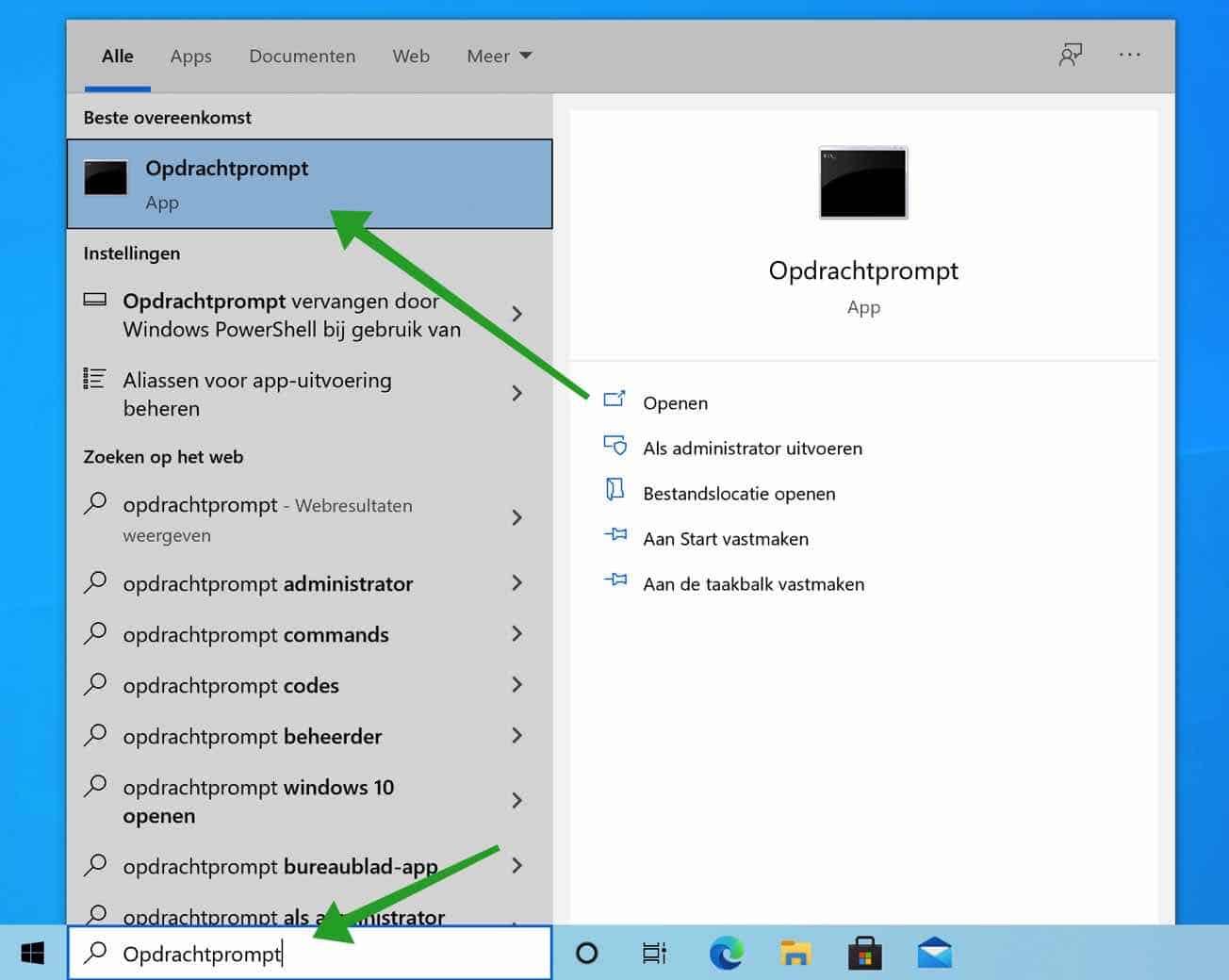
In het Opdrachtprompt venster type:
ipconfig /flushdns
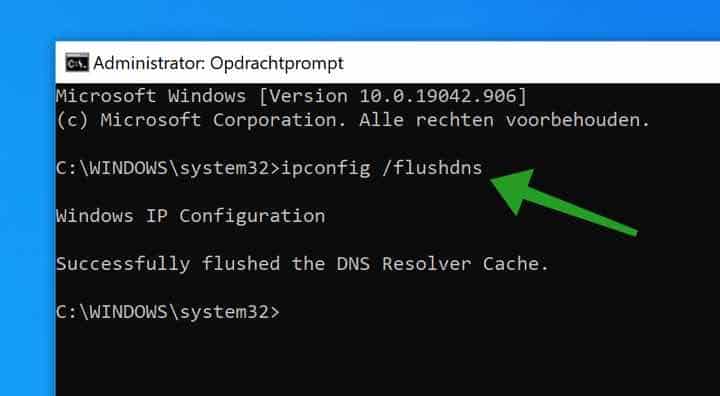
U heeft nu de tijdelijke DNS-cache gewist in Windows. Controleer of de DNS-server reageert niet foutmelding is opgelost.
DNS Client service starten of herstarten
Om de vertaling te maken van een IP-adres naar een domeinnaam gebruikt Windows de “DNS Client” service om cache op te bouwen. Het starten of herstarten van deze “DNS Client” service kan problemen met een DNS-server oplossen.
In de Windows zoekbalk type:
services.msc
Open de Service-applicatie.
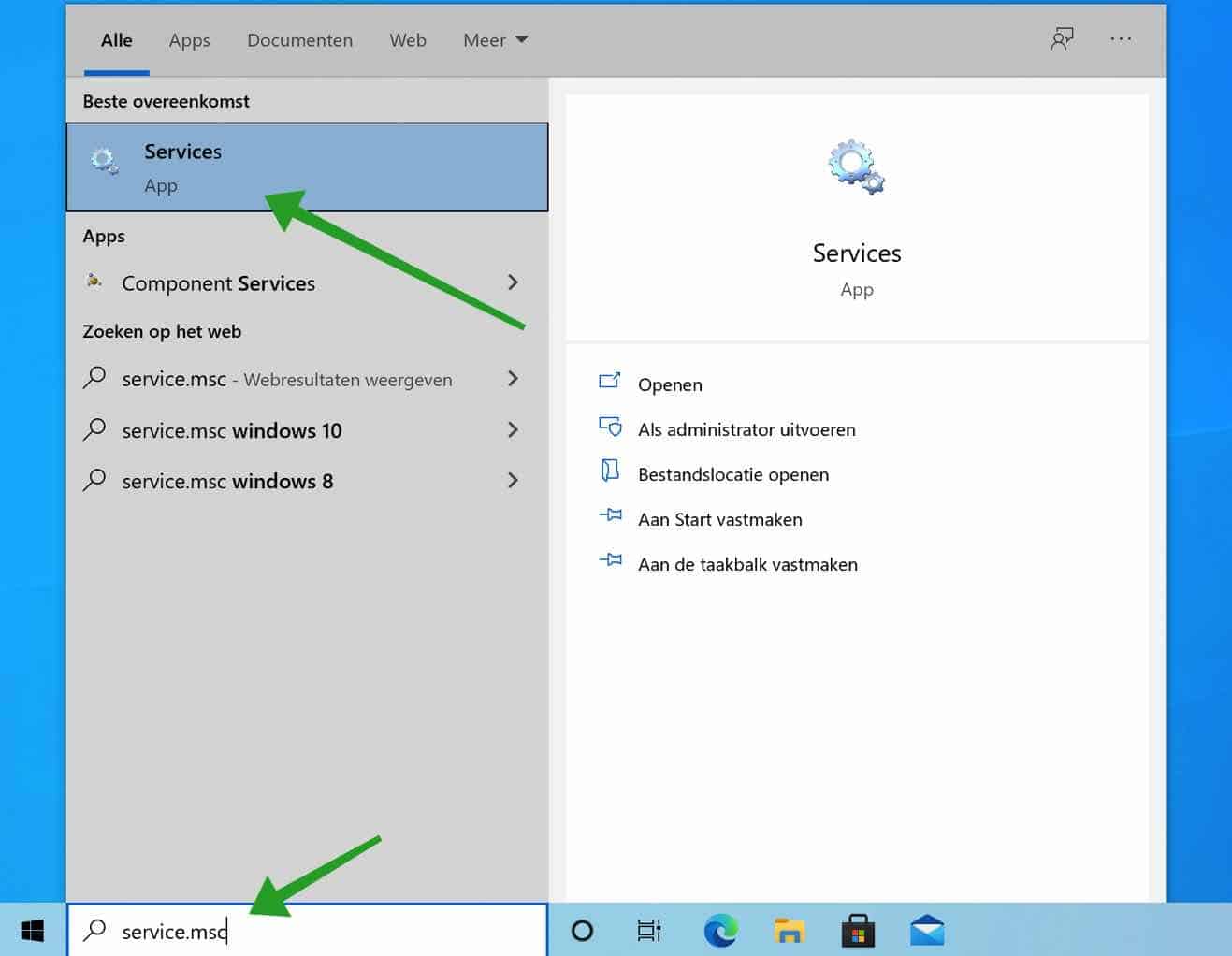
Controleer of de “DNS Client” service is gestart. Indien de “DNS Client” service al is gestart, klik met de rechtermuisknop op de “DNS Client” service-naam en kies voor Herstarten. Als de “DNS Client” service nog niet is gestart kies dan voor “Starten”.
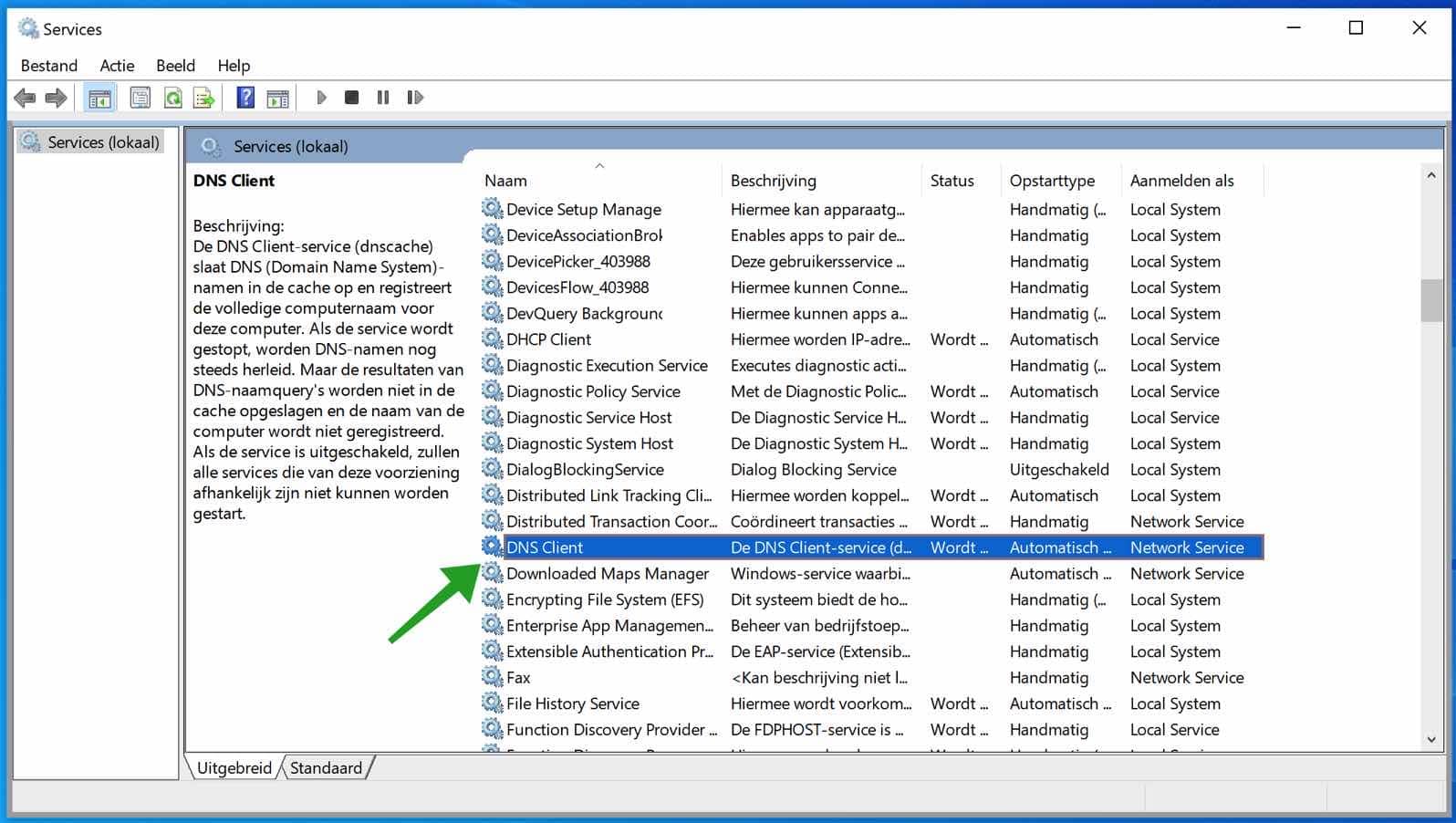
Alternatieve DNS instellen
Om een DNS-server probleem op te lossen kunt u veel doen op uw eigen computer. Echter als het probleem ligt bij de DNS-server (in de meeste gevallen bij uw internet provider) dan kunt u daar op dit moment niets aan veranderen. Een DNS instellen van een andere DNS-server zoals die van Google kan dan het “DNS-server reageert niet” probleem oplossen.
In de Windows zoekbalk type:
ncpa.cpl
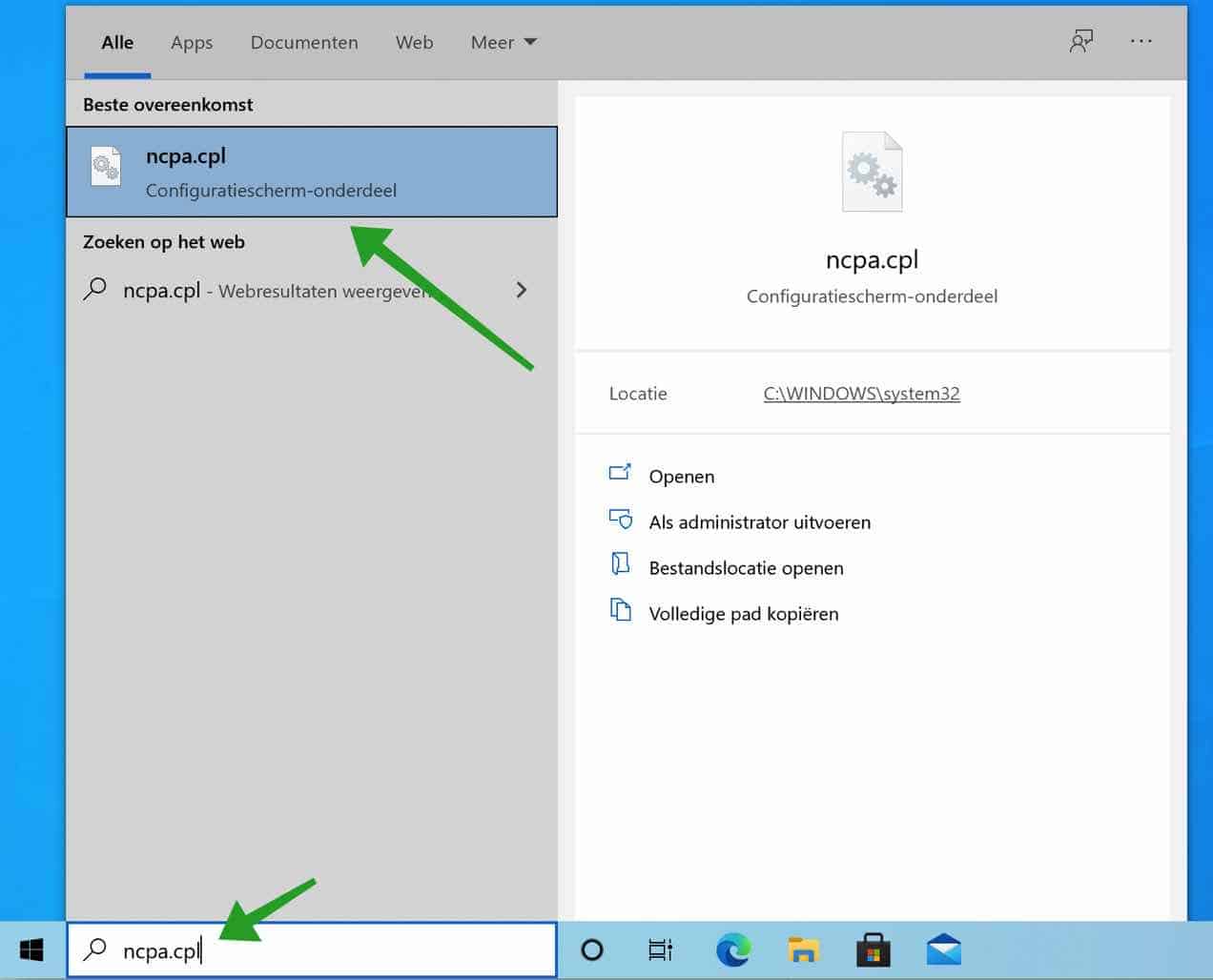
Open het NCPA.cpl resultaat.
U ziet nu uw actieve internetverbindingen. Als u met de kabel verbonden bent met een netwerk of het internet klikt met de rechtermuisknop op Ethernet. Als u verbonden met via Wifi kies dan voor Wifi of Draadloze adapter. Kies eigenschappen uit het menu.
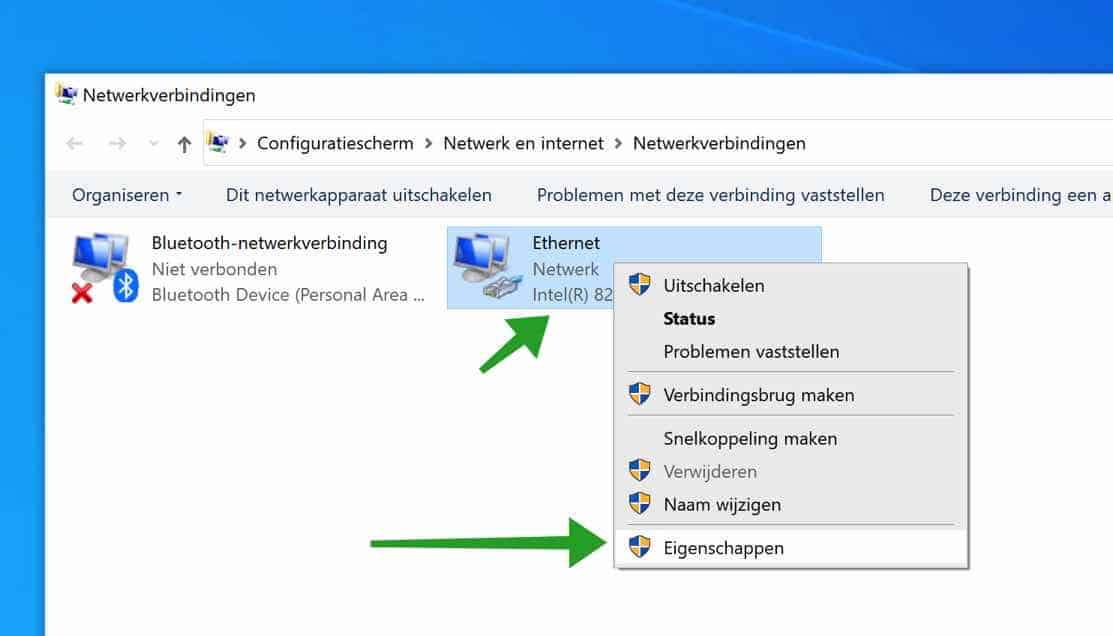
Klik op “Internet Protocol versie 4 (TCP/IPv4)” en klik op de Eigenschappen knop.
Belangrijk: Noteer uw huidige DNS-server instellingen. Maak bijvoorbeeld een schermprint van de DNS-instellingen zodat u deze later eventueel terug kunt herstellen!
Klik op “De volgende DNS-serveradressen gebruiken”. In de voorkeur DNS vult u in: 8.8.8.8 en bij de Alternatieve DNS-server vult u in: 8.8.4.4.
Dit zijn de publieke DNS-servers van Google. Deze Google DNS-servers zijn over het algemeen sneller dan uw huidige internet provider DNS-servers.
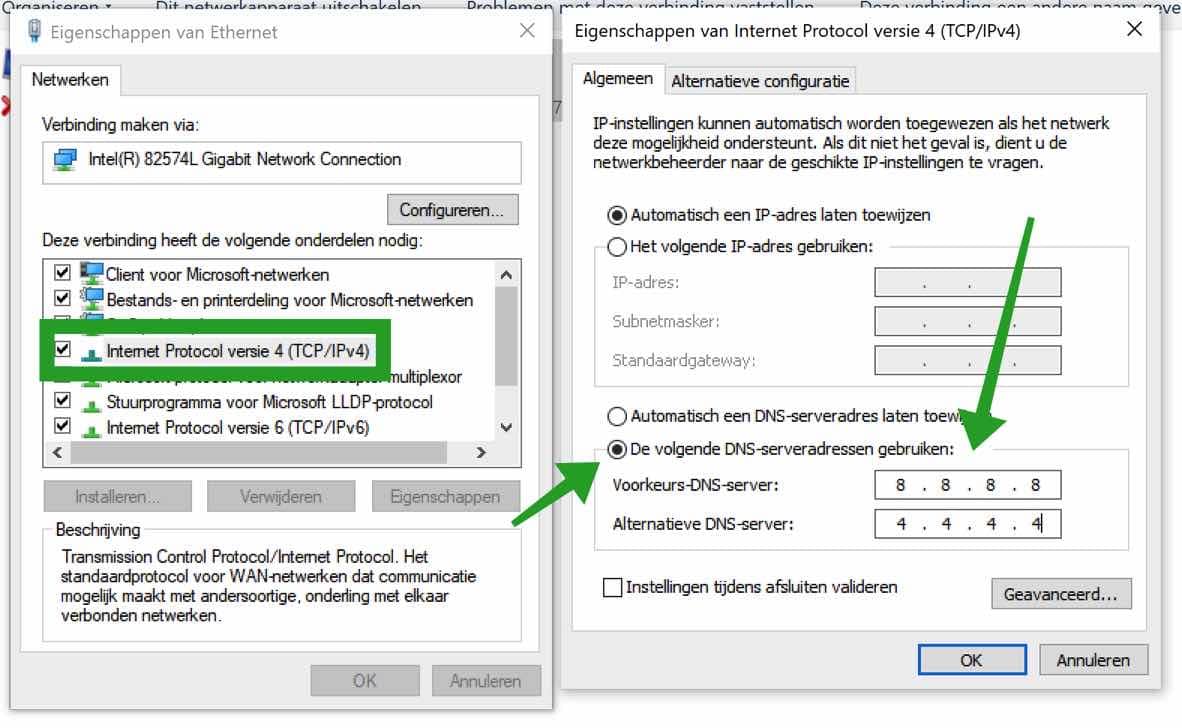
Klik op OK en herstart uw computer. Noteer het websiteadres van deze website om terug te keren als het nog niet werkt.
DNS-server instellingen herstellen
Als niet werkt dan is het mogelijk de DNS-server instellingen in Windows te resetten. Dit betekent dat alle instellingen verloren gaan en dat Windows de DNS-server instellingen opnieuw opbouwt.
In de Windows zoekbalk type: Opdrachtprompt. Klik met de rechtermuisknop op het Opdrachtprompt resultaat en kies voor Als Administrator uitvoeren.

In het Opdrachtprompt venster type het volgende, na elke commando bevestigd u met een ENTER toets.
ipconfig /registerdns
ipconfig /release
ipconfig /renew
netsh winsock reset
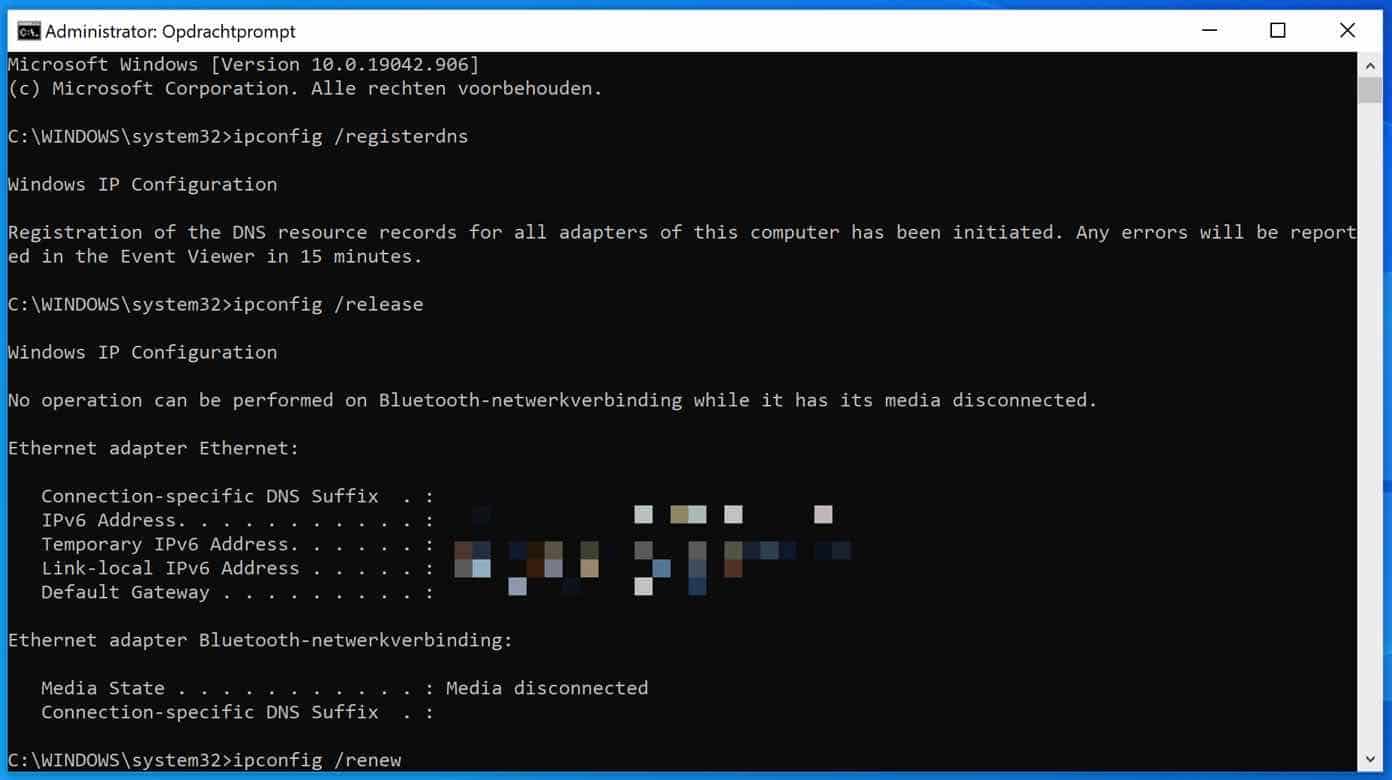
Herstart uw computer als u klaar bent met het uitvoeren van de DNS reset commando’s.
Schone herstart uitvoeren in Windows
Een schone herstart van Windows kunt u gebruiken om te identificeren of er conflicten bestaan tussen software en de DNS. Als een bepaalde applicatie toegang tot de DNS-server blokkeert dan kunt u met een schone herstart van Windows mogelijk identificeren welke software dit betreft en het programma uitschakelen of verwijderen.
Ik hoop dat hiermee het probleem “DNS-server reageert niet” is opgelost. Bedankt voor het lezen!


Hee Stefan,
Ik ben al vaker op je site terecht gekomen, heel fijn! Dus eerst bedankt.
Deze keer lukt t me helaas niet. Na een Windows update lukt t me niet meer om internet te krijgen op netwerken waarmee t voor de update wel lukte. Andere computers en smartphones lukt t wel en uit de foutcontrole lijkt t inderdaad de DNS te zijn.
Ik heb alle (eerste zes) bovenstaande oplossingen gevolgd. Echter bij de 4e en 6e lijk ik niet de bevoegdheid te hebben: bij 4 zijn de opties grijs en bij 6 zegt ie dat ik de bevoegdheid niet heb. Ook als ik als Administrator uitvoer. Mijn account is de enige op de computer en is ook Administrator account. Ik snap t niet en baal. Misschien heb je tips?
Hallo, als u zeker weet dat het komt door een Windows update, dan kunt u deze verwijderen:
https://www.pc-tips.info/tips/windows-tips/3-manieren-om-een-windows-update-te-verwijderen/
U kunt ook een herstelpunt terugzetten:
https://www.pc-tips.info/tips/windows-tips/windows-herstelpunt-maken-en-terugzetten-uitgebreide-instructie/
Controleer ook software van derden, bv een “beveiligingspakket”, “firewall”, “antivirus”. Heeft u recente wijzigingen gedaan, draai deze dan terug.
Ik raad u aan een “schone herstart” uit te voeren onderaan deze instructie. Dit helpt om te bepalen of het probleem zit in deze PC.
Succes!
Bedankt Stefan,
Uiteindelijk heb ik vanwege onderhoud (vervangen van beide schijven) een nieuwe Windows installatie en alles werkt weer naar behoren. Maar even wachten tot ik Windows 11 weer installeer 😉
Toppie van je dat je neemt de tijd om de minder goden in het systeem van Windows te helpen.
Het ging werken ff 1 mn. Maar plotseling weer geen Internet.
Ik heb beide oplossing van je gebruikt. 🤔
Bedankt ! Door de DNS server en alternatieve DNS server op resp 8888 en 4444 te zetten werkte alles weer.
Fijn dat ik kon helpen. Bedankt voor uw bericht!